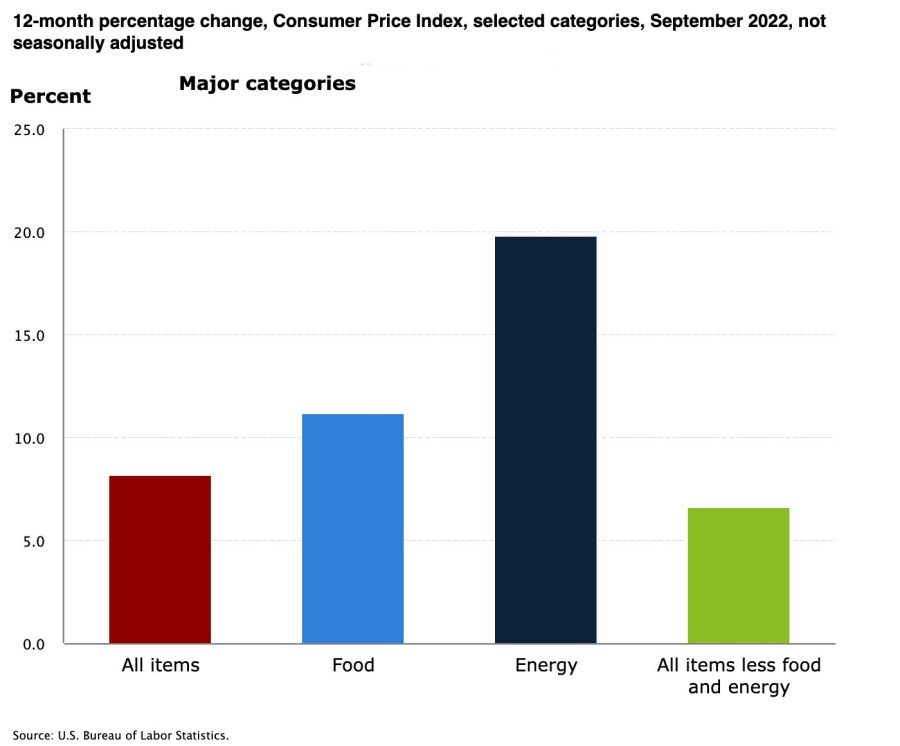Inflation abounds in September consumer price index report
October 22, 2022
The Bureau of Labor Statistics’ latest consumer price index report showed unfavored outcomes for September, causing uproars in the market and among investors and consumers.
The index recorded inflation at 8.2%, which is 0.4% higher than in August. The causes of this rise are the high food, shelter and medical care prices, along with nominal wages that have lagged behind inflation.
The increase was more tremendous than the rate by which August increased, which amounted to only 0.1%. The 0.4% increase was also more than the 0.3% that the Dow Jones estimated.
Food prices climbed 0.8% higher. This not only puts pressure on households, but also on the working class, as they spend a larger portion of their income on food, leaving little to no money for other necessities.
Economists expressed disappointment, and the markets did not react any better to the report, falling after the news broke.
The S&P 500 fell by more than 2%, reaching a new low for the year before rallying back to 2.6% by the day’s end.
This hesitation and manipulation within the market created instability for investors, sellers and traders. This instability inspires these entities to resort to safer investment paths, explaining why government bond yields surged to about 0.2%.
This was in response to the expectations not going in the Federal Reserve’s favor and disbelief among many in the Fed’s ability to accomplish its goals.
But the 8.2% index this month is still lower than its peak of 9% in June.
When stripping out the volatile food and energy prices, the core index was even higher for the month, as it was up to 0.6%. This made it 6.6% higher from a year ago.
Following the news of the index data, a fourth consecutive 0.75 percentage point hike when the Fed meets this coming November is expected.
In addition to wages not adjusting to inflating prices, spending in other areas has increased. For example, airfares have increased to 0.8%.
Jobless claims totaled 228,000, an increase from last week’s 219,000, indicating a low amount of layoffs and a strong labor market.
The frustration in the market comes from being stuck in a cycle where the Fed continues its aggressive rate hikes, prices continue to rise and spending continues to increase instead of decrease.
An indicator of people not buying houses, rent climbed to 7.2%, compared to the normal rate it usually does, which is 3% per year. This also shows people are choosing to rent instead of buy homes.
Although gas prices remain low and are relieving some pain for consumers, they may increase soon and exacerbate an already high spending pattern.
Consumers are left wondering when they will start seeing any signs of the Fed’s methods to tame inflation working.








